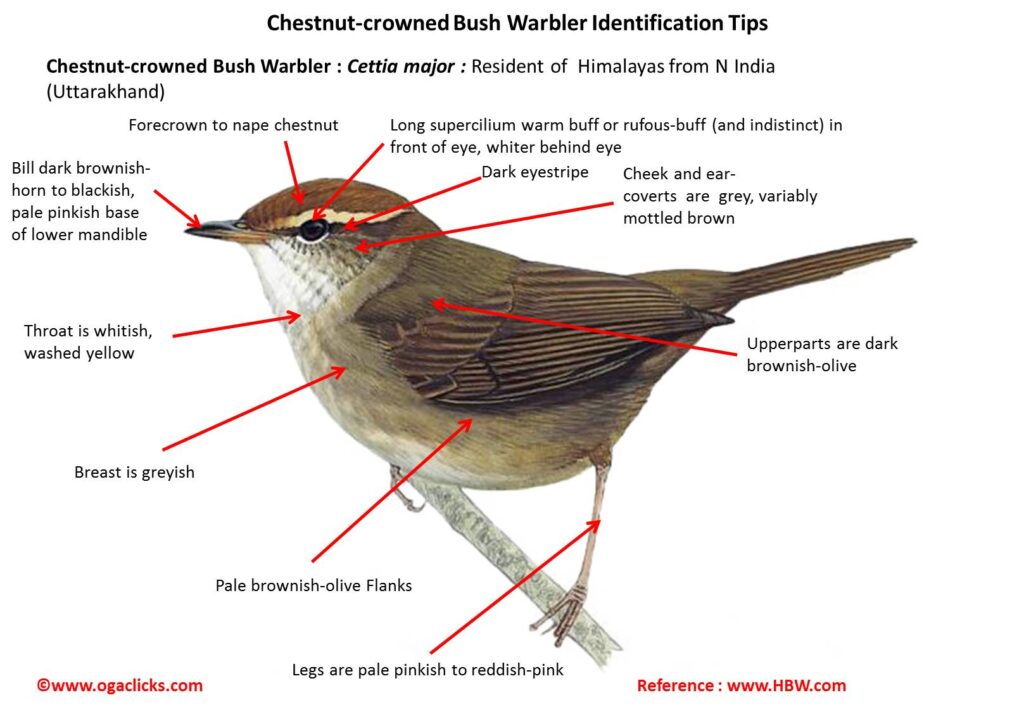
Chestnut-crowned Bush Warbler Cettia major
Etymology:
- Cettia : Named after Cetti’s warbler, which itself isnamed after the Italian zoologist Francesco Cetti
- Major: Latin word for greater
Sub Species:
- Nominate – Resident of Himalayas from N India (Uttarakhand)
- m. vafra– Resident of North East India (Assam). {more chestnut on crown and nape, and deeper brown (less olive) upperparts than nominate.}
Distribution:
- Nominate – Resident of Himalayas from N India (Uttarakhand)
- m. vafra– Resident of North East India (Assam)
Details: Size of 13 cm; wt. of 9·7 g. It is a medium-sized to large bush-warbler with distinctive chestnut crown. The nominate race has fairly long supercilium warm buff or rufous-buff (and indistinct) in front of eye, whiter behind eye. It has a short diffuse dark eyestripe also more prominent behind eye. The cheek and ear-coverts are grey, variably mottled brown. The forecrown to nape is chestnut, upperparts are dark brownish-olive. It is whitish below, breast side is greyish, flanks are brownish-olive. The iris is dark; bill is dark brownish-horn to blackish, pale pinkish base to lower mandible; legs are pale pinkish to reddish-pink. Both the sexes are alike. The juvenile lacks chestnut crown is dark olive-brown above, greyish-buff supercilium behind eye, greyish-olive breast side and mottling across throat and breast, yellowish wash on belly. Race vafra has more chestnut on crown and nape, and deeper brown (less olive) upperparts than nominate.
Habitat: It is found in ground vegetation and thorn-scrub in high-altitude fir forests, rhododendron shrubberies in silver fir forest around tree-line and also dwarf rhododendron thickets above tree-line. It is found at 3300–4000 m at or near tree-line in Himalayas. In winter, it is found in open grassy and scrub areas, often near water, occasionally at edges of forest; lowlands, usually below 250 m.
Food habits: It eats small invertebrates and larvae. It is secretive, shy and mouse-like in habits. It forages low down or on ground in thick vegetation; occasionally ventures out into open on clearings or paths.
Breeding habits: They breed in Jun–Aug. The nest is globular, made from grass and bamboo, lined with fine vegetable fibres and feathers, placed in bush.